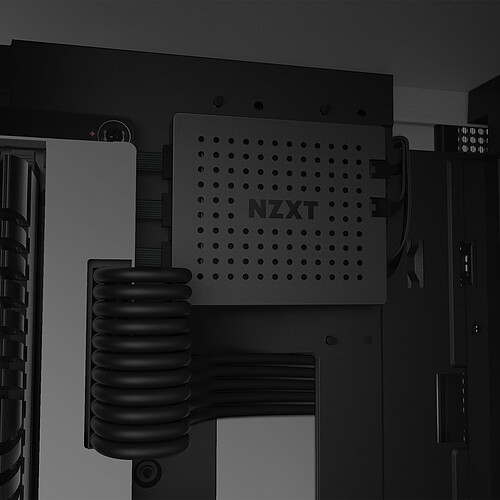
Gain better control over your system with an improved microprocessor, providing CAM-powered control of two RGB lighting channels and three fan channels. Fan channels support either voltage-regulated or PWM fans for greater versatility. Maintain better control over your system with an improved microprocessor, providing CAM-powered control of two RGB lighting channels and three fan channels. Thankfully, you can daisy-chain the fans rather than each one requiring a physical connection to the controller, so if you're connecting them in series along a radiator or multiple fan mounts, it's actually fairly easy to deal with the lighting side of things.Two RGB Lighting Channels and Three Digitally-controlled Fan Channels To get them working, you'll need to power each fan with the usual 4-pin PWM connector, then hook up a separate cable to the controller. A set of HD 120s can lay on some very funky effects, mind you, and can also spread these across the fans in wave effects down your PC - the same is true here with the Aer RGB fans, except they're more flexible with even more effects and colours to choose from.

However, there's one big difference between the NZXT Aer RGB fans and Corsair's HD 120s, which is that the former are fully RGB - you can select from the usual massive colour pallet, choosing practically any colour you like, while the Corsair controller is only able to cycle through a few colours and effects. You can do this with a trio of Corsair HD 120 fans for £70, including the controller. When we connected the Aer RGB's to an Aura-compatible Asus board, not a lot happened.įor the Aer RGBs, you'll need NZXT's Hue+ controller as well, and remembering that the triple set of Aer RGB 120mm fans we're looking at here already retails for £70, the added expense for the controller, albeit along with four 30cm RGB LED strips, at around £40 means that to kit your PC out with three RGB fans will cost over £100. Specifically, they both require each company's RGB controller to work - you can't use motherboard RGB headers from the likes of Asus here, which is a bit of a pain. While NZXT's and Corsair's offerings are different in ways we'll get to in a minute, there are some similarities in the way they work.


 0 kommentar(er)
0 kommentar(er)
